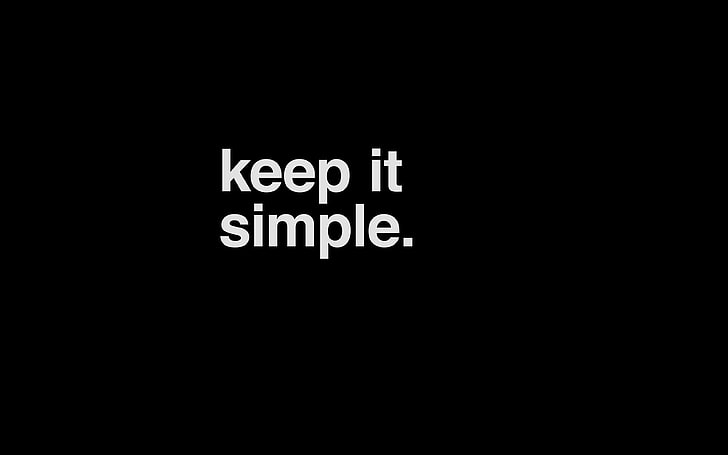Mastering Your Graphic Design Portfolio: Insider Tips and Tricks
Master your graphic design portfolio with these insider tips and tricks. Create a compelling narrative that showcases your work, reflects your personality, and connects with your audience.

Have you ever found yourself in a situation where you're trying to explain your work to someone, but words just don't do it justice? You know, those moments when you're like, "It's a visual thing, you'd get it if you saw it."
Well, this is where a well-optimized graphic design portfolio comes in handy!
Graphic design portfolios are like visual biographies. They tell your story, showcase your style, and demonstrate your skills, all while putting on a dazzling display of your best work. But just like writing a gripping biography, there's an art to crafting a portfolio that captures attention. Let's dive into how to do just that.
The Why and What of a Graphic Design Portfolio
Before we dive into the how, let's take a moment to understand why a portfolio is so vital for a graphic designer.

First off, your portfolio is your visual CV. In a sea of creativity, it's your lifeboat that helps you stand out. It's your chance to show potential clients or employers not just that you can create beautiful designs, but that you can solve problems, tell stories, and communicate ideas visually.
A portfolio provides tangible proof of your skills. It's one thing to mention 'Graphic Design' as a skill on your resume, but a portfolio shows that you can walk the walk, not just talk the talk.
Lastly, and perhaps most importantly, a portfolio gives you the freedom to showcase your unique style. Just as every artist has their signature brush stroke, every graphic designer has their distinct style. Your portfolio is your canvas to let that style shine.
Top Tips for an Optimized Portfolio
1. Keep It Simple
In the world of design, simplicity often wields more power than complexity. This philosophy isn't just confined to your design work, but extends to your portfolio as well.

A minimalistic approach to your portfolio allows your work to take center stage, free from unnecessary distractions. It's not about cramming every project you've ever worked on into your portfolio. Instead, it's about carefully selecting a handful of your best pieces that truly represent your skills and creative journey.
Remember the age-old adage, "less is more." This couldn't be more true when it comes to your portfolio. A few carefully chosen, outstanding works can speak volumes about your skills and creativity, far more than a plethora of average pieces. It shows potential clients or employers that you understand the value of quality over quantity and that you can discern your best work from the rest. It also makes it easier for viewers to appreciate each piece without feeling overwhelmed by a sea of projects.
2. Tell a Story
A portfolio is more than just a collection of work, it's a narrative that chronicles your creative journey. Each project is like a chapter in your story, illustrating your growth, experiences, and the unique challenges you've tackled. But how do you tell a story with your portfolio?

When presenting each project, don't just show the final product. Explain the context of the project. What was the problem you were tasked to solve? How did you approach it? What was your creative process? How did your design provide a solution? And what impact did it have on the client's business or audience? This narrative approach transforms your portfolio from a simple showcase to a captivating saga that demonstrates your problem-solving prowess and creative evolution.
3. Show Your Process
The creative process is often as interesting as the final product, if not more so. This holds true for your design process as well. Don't shy away from showcasing your initial sketches, wireframes, mood boards, and iterations. These elements provide a fascinating behind-the-scenes look into your creative process.

They reveal how you think, solve problems, and pay attention to detail. By showing your process, you're giving potential clients or employers a glimpse into how you work. It's like giving them a VIP backstage pass to your creativity and work ethic. It also shows them that you're not afraid to iterate and refine your ideas, a crucial skill in the design world.
4. Inject Your Personality

Your portfolio should be a reflection of who you are as a designer and as an individual. Infuse your unique style, voice, and personality into your portfolio. This could be through the color scheme, typography, layout, or even the way you write your project descriptions. A portfolio that mirrors your unique perspective and style creates a memorable impression and helps you stand out from the crowd.
After all, clients and employers are not just hiring a designer, they're hiring a person with a unique creative vision. By injecting your personality into your portfolio, you're showing them that you're not just another designer, but a unique individual with a distinct creative voice. This personal touch can be the deciding factor that gets you hired or lands you a project.
5. Keep It Updated

In the fast-paced world of design, staying current is crucial. An outdated portfolio can give the impression that you're disconnected from the latest trends and technologies. To avoid this, make it a habit to regularly update your portfolio with your latest and greatest work. This not only showcases your most recent skills and styles, but also demonstrates your commitment to continual learning and growth.
Updating your portfolio is also an opportunity to refine and improve it. Maybe there's a project description that could be written better, or a piece of work that no longer represents your best skills. Regular updates allow you to keep improving your portfolio, ensuring that it always puts your best foot forward.
6. Diversify Your Content

While it's important to have a signature style, demonstrating versatility can be a major plus. Showcase a range of skills and styles in your portfolio. This could include print design, digital design, illustration, branding, and more. A diversified portfolio can appeal to a wider audience and shows that you're adaptable and capable of tackling a variety of design challenges.
By diversifying your content, you're showing potential clients or employers that you're not a one-trick pony, but a versatile designer who can adapt to different styles and mediums. It also shows that you're constantly exploring and pushing your boundaries, a trait that's highly valued in the creative world.
7. Highlight Client Feedback and Achievements

Nothing speaks louder than the praise of satisfied clients or the recognition of your peers. Include testimonials from clients, awards, recognitions, or any other achievements in your portfolio. These elements add credibility to your work and demonstrate the real-world impact of your designs.
Testimonials and recognitions show potential clients or employers that your work is not only aesthetically pleasing, but also effective in solving problems and achieving results. They're like shiny badges of honor that add depth and validity to your portfolio, making it more compelling and persuasive.
8. Make It Accessible and Easy to Navigate

The user experience of your portfolio is just as important as the work it showcases. A well-organized, intuitive layout makes browsing your portfolio an enjoyable experience. Ensure that your portfolio is responsive, enabling it to look great on various devices. Remember, a great portfolio is not just about showcasing your best work, but also providing an enjoyable journey for the viewer.
A portfolio that's easy to navigate shows that you understand and value good design, not just in your work, but also in how you present it. It shows potential clients or employers that you have a keen eye for detail and a deep understanding of user experience, skills that are highly valuable in the design world.
9. Leverage Social Proof and Networking

In the digital age, being a part of the online creative community can give you a significant edge. Integrate your social media and professional networks into your portfolio. This not only allows you to connect with a broader community but also provides an opportunity to share insights and expand your professional network.
By integrating social proof and networking into your portfolio, you're showing potential clients or employers that you're connected, engaged, and active in the design community. It also gives them a glimpse into your interactions and relationships with others in the industry, adding another layer of depth to your portfolio.
10. Be Mindful of SEO and Online Presence

Last but not least, remember that your portfolio needs to be found to make an impact. Implement SEO best practices to increase your online visibility. Maintain an active online presence, through blogging, social media, or online communities. This not only helps in building your personal brand but also increases your chances of being discovered by potential clients or employers.
In the digital age, having a strong online presence is as important as having a strong portfolio. By being mindful of SEO and maintaining an active online presence, you're ensuring that your portfolio reaches a wider audience and has a greater impact.
How Can Jingle Bio Help?
Now, mastering these steps is one thing, but implementing them is another. And that's where Jingle Bio comes in. It allows you to create a dynamic, personal portfolio that tells your unique story. With Jingle Bio, you can easily implement these tips and create a portfolio that's not just a showcase of your work, but a reflection of you.

And the best part? Jingle Bio isn't just for graphic designers. Whether you're a writer, a photographer, or a potter, Jingle Bio can help you create a portfolio that's as unique as your work.
So go ahead, give it a shot. After all, your portfolio is the key to your dream job, and we're here to help you unlock it.
Happy portfolio building!